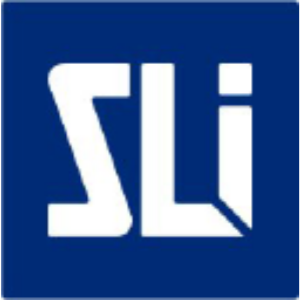Standard Lithium Announces Positive Preliminary Feasibility Study Results for Its South West Arkansas Project
Results Include US
EL DORADO, Ark., Aug. 08, 2023 (GLOBE NEWSWIRE) -- Standard Lithium Ltd. (“Standard Lithium” or the “Company”) (TSXV:SLI) (NYSE American:SLI) (FRA:S5L), announced today the positive results of a Preliminary Feasibility Study (“PFS”) for the Company’s
All figures are in US dollars unless otherwise stated.
PFS Highlights:
- Lithium brine project in southwestern Arkansas. PFS indicates base case production of 30,000 tonnes per annum (“tpa”) battery-quality lithium hydroxide monohydrate (“LHM”); upside case of 35,000 tpa
- 20-year plus operating life. Upgraded mineral resource averaging 437 mg/L underpins a minimum 20-year operating life
- Robust project economics. Base case after-tax NPV
$3.1 billion and IRR of32.8% and upside case after-tax NPV$3.7 billion and IRR of35.4% , assuming production of 30,000 tpa and 35,000 tpa, respectively, and both assuming discount rate of8% and a long-term price of$30,000 /t for battery-quality LHM - Competitive operating costs. Average annual operating costs of
$4,073 /t of LHM over the operating life - CAPEX of
$1.3 billion . Total capex estimate of$1.3 billion includes conservative20% contingency - Increased lithium grades support larger resource. Upper Smackover Indicated and Middle Smackover Inferred Resource of 1.4 Mt and 0.4 Mt lithium carbonate equivalent (“LCE”), respectively, with an average lithium concentration of 437 mg/L and maximum reported lithium grade of 597 mg/L
“The robust economics from the South West Arkansas Project PFS showcase its incredible potential,” said Dr. Andy Robinson, President and COO of Standard Lithium. “Our exploration program in the first half of this year yielded significantly improved lithium concentrations and grew the total resource to 1.8 million tonnes of lithium carbonate equivalent. The upgraded resource underpins an operating life of at least 20 years at competitive costs.”
“Our team has also been hard at work at our Demonstration Plant at the Lanxess South Facility in El Dorado, processing approximately 14 million gallons of Smackover brine to date and successfully extracting lithium. We now have a well-tested direct lithium extraction (‘DLE’) process, and we successfully converted our DLE product into battery-quality lithium hydroxide. This start-to-finish proven process, combined with an improved resource at SWA, positions the Project to be a meaningful contributor to U.S. lithium supply within this decade.”
"Standard Lithium's pioneering work in the Smackover Formation and strong results of the SWA PFS solidifies the region’s status as North America's premiere lithium brine resource," commented Standard Lithium CEO Robert Mintak. "Our mission is to boost domestic lithium production through a phased development approach. Starting with the Lanxess 1A project, we aim to deliver the first new lithium production facility in the U.S., with results from a Feasibility Study to be reported shortly. These encouraging outcomes from SWA, along with our initiatives in East Texas, underscore the need for simultaneous advancements within our project portfolio, as we are dedicated to leading the region into becoming a key player in America's lithium supply chain."
About the South West Arkansas Project
The South West Arkansas Project is located approximately 15 miles (24 kilometers) west of the City of Magnolia in Columbia County, south western Arkansas. It encompasses approximately 27,262 net lease acres in Columbia and Lafayette counties and forms the updated 2023 Upper Smackover Indicated and Middle Smackover Inferred resource of 1.4 Mt and 0.4 Mt LCE, respectively, at an average lithium concentration of 437 mg/L.1 The Project is easily accessible via a paved highway and extensive regional infrastructure including: water, power, gas and rail. The region’s rich history of operating oil and gas assets supports the local workforce pool.
The Company is targeting construction to begin in 2025 and production to commence in 2027, subject to continuing project definition, due diligence, available financing and receipt of future feasibility studies.
___________________________________
1 As the PFS contemplates a future production scenario, it is necessary to model the potentially available resource by aggregating these leases into a single unitized production area; this has the effect of ‘filling in the gaps’ between the lease parcels to generate a single unitized area of 36,172 gross mineral acres (14,638 gross mineral hectares) and forms the updated 2023 resource.
Table 1: PFS Highlights
| Base Case | Upside Case | ||
| Average Annual Production of LHM | tpa[1] | 30,000[2] | 35,000[2] |
| Plant Operating Life | years | 20 | 20 |
| Total Capital Expenditures | $ millions | 1,274[3,4] | 1,360[3,4] |
| Average Annual Operating Cost | $/t | 4,073 | 3,964 |
| Average Annual All-in Operating Cost | $/t | 5,229[5,6] | 5,060[5,6] |
| Selling Price | $/t | 30,000[7] | 30,000[7] |
| Discount Rate | % | 8.0 | 8.0 |
| Net Present Value (NPV) Pre-Tax | $ | 4,473 | 5,367 |
| Net Present Value (NPV) After-Tax | $ | 3,090[8] | 3,736[8] |
| Internal Rate of Return (IRR) Pre-Tax | % | 41.3 | 44.4 |
| Internal Rate of Return (IRR) After-Tax | % | 32.8 | 35.4 |
Notes:
All model outputs are expressed on a
[1] Metric tonnes (1,000 kg) per annum.
[2] Resource modelling work indicates the SWA Property appears to be capable of producing more than 30,000 tonnes per year of lithium hydroxide monohydrate for 20 years or more, and that production rates greater than 35,000 tonnes per year are possible.
[3] Capital Expenditures include
[4] No inflation or escalation has been carried for the economic modelling.
[5] Includes all operating expenditures, ongoing land costs, royalties, and sustaining capital.
[6] Brine lease fees in-lieu-of-royalties (to be approved Arkansas Oil and Gas Commission) have not been defined and are not currently included in the economic modelling.
[7] Selling price of battery-quality lithium hydroxide monohydrate based on a flatline price of
[8] Assumes a U.S. Federal tax rate of
Project Overview
The development plan considered for the SWA Project PFS demonstrates production of battery-quality lithium hydroxide monohydrate averaging 30,000 tonnes per annum (“tpa”) over a 20-year operating life. The Project will pump brine from the Smackover Formation aquifer via production wells, extract lithium from the brine, convert it to a saleable product, and then reinject the effluent brine via injection wells to maintain pressure in the reservoir.
The PFS assumes a network of 21 brine supply wells will be completed in the Smackover Formation, producing approximately 1,700 m3/hr or 7,500 US gallons per minute. Twenty-two injection wells will support pressure maintenance in the Smackover aquifer to maintain long-term production.
Brine from the supply wells will be routed to a lithium extraction and lithium hydroxide production facility by a network of underground fiberglass pipelines. The brine entering the production facility will be pre-treated and then processed via Koch Technology Solutions’ Lithium Selective Sorption (“LSS”) DLE process described further below. After purification and concentration, final conversion to a lithium hydroxide product would use a modified chlor-alkali electrolysis process.
After lithium extraction, the lithium depleted brine will be returned to the resource area by a pipeline system to the network of brine injection wells.
LSS Direct Lithium Extraction
Standard Lithium has been developing two forms of direct lithium extraction at the Demonstration Plant (the “Demo Plant”) in Arkansas: the Company’s proprietary LiSTR process and a co-developed Lithium Selective Sorption (“LSS”) process which is a Koch Technology Solutions (“KTS”) proprietary technology. Under the Joint Development Agreement with KTS, Standard Lithium has Smackover regional exclusivity for the LSS process (see news release dated 9th May 2023).
Both the LiSTR and LSS DLE processes have successfully selectively extracted lithium from Smackover brine. The Company used the LSS process as the basis for the DLE in the SWA Project PFS based on certain technical and commercial considerations.
The LSS process has been in operation at the Demo Plant since October 2022. Over 6,000 operating cycles having been concluded at the time of the PFS, achieving consistent lithium extraction efficiencies of greater than
The LSS process produces a high-quality lithium chloride solution which will be further purified and concentrated by means of reverse osmosis, chemical softening, ion exchange and evaporative crystallization. The result is a high-purity lithium chloride suitable for electrochemical conversion to lithium hydroxide.
Lithium Hydroxide Production
The further concentrated and purified lithium chloride solution will be processed by electrolyzers to form a high-purity lithium hydroxide solution. The Company evaluated several technologies at laboratory and pilot scale testing to support the selection of electrolysis as the core technology for conversion of lithium chloride to lithium hydroxide.
The testing undertaken during the PFS phase produced battery-quality lithium hydroxide from Smackover brines processed through the Demo Plant, confirming the viability of the process. The output solution from electrolysis will be crystalized into a solid, battery-quality lithium hydroxide monohydrate (“LHM”) using standard, proven processes.
Capital Costs
At full build-out, with estimated average production over 20 years of 30,000 tpa of LHM, the direct capital costs are estimated at
Table 2: Base Case Capital Cost Summary
| Capital Cost ($ millions) | |
| Wellfield | 237 |
| Brine Receiving/Pre-Treatment | 167 |
| Lithium Hydroxide Unit | 158 |
| Purification & Concentration | 153 |
| Direct Lithium Extraction Unit | 139 |
| Chemical Storage, Handling, & Utilities | 124 |
| Pipelines | 68 |
| Plant Buildings & Freight | 17 |
| Contingency ( | 211 |
| Total Capital Cost | |
Notes:
[1] Direct costs were estimated using either vendor-supplied quotes, and/or engineer estimated pricing (based on recent experience) for all major equipment.
[2] Indirect costs include all contractor costs (including engineering); indirect labor costs and Owner’s Engineer costs.
[3] Wellfield and pipelines estimates were based on Hunt, Guillot & Associates’ recent project experience in the local area.
Operating Costs
The operating costs are based on the operation achieving average annual production of 30,000 tpa of LHM. Cost estimates include both direct and indirect costs, as well as allowances for mine closure/well abandonment.
The operating cost over the life of the project is
Table 3: Base Case Operating Cost Summary
| Average Annual Cost ($/t)[1] | |
| Electrical Power & Infrastructure[2,3] | 1,291 |
| Reagents & Consumables[4] | 1,158 |
| Solids Disposal | 546 |
| Maintenance[5] | 470 |
| Workforce[6] | 371 |
| Insurance | 140 |
| Miscellaneous Costs & Closure[7] | 99 |
| Total Operating Cost | |
| Sustaining capital expenditures | |
| Royalties[8] | |
| All-in Operating Cost | |
Notes:
[1] Operating costs are calculated based on average annual production of 30,000 tonnes of lithium hydroxide.
[2] Approximately
[3] Assumes that all natural gas is purchased from open market and none is co-produced at the wellheads.
[4] Greater than
[5] Includes all maintenance and workover costs and is based on experience in similar-sized chlor-alkali facilities, brine processing facilities and Smackover brine production wellfields.
[6] Approximately 91 full time equivalent positions.
[7] Indirect costs (environmental monitoring, community benefits etc.) are factored from other capital and operational costs, except for mine closure, which is based on estimated well-abandonment costs.
[8] Based on agreed royalties and expected future lease costs. Does not include future lease-fees-in-lieu-of-royalties which are still to be determined and subject to regulatory approval (lease-fees-in-lieu-of-royalties have been determined for bromine and certain other minerals in the State of Arkansas, but have not yet been determined for lithium extraction).
Project Economics
The financial results are derived from inputs based on the annual production schedule as set forth in the PFS. Sensitivity analysis on the unlevered economic results over a 20-year operating life are summarized in Table 4 below.
Table 4: Base Case South West Arkansas Sensitivity Analysis
| Base Case After-Tax NPV (US$ millions) | Base Case After-Tax IRR (%) | |
| LHM Price ($/t) | ||
| - | ||
| + | ||
| Operating Costs | ||
| + | ||
| - | ||
| Capital Costs | ||
| + | ||
| - |
Mineral Resource Assessment
The PFS contemplates production of battery-quality lithium hydroxide averaging 30,000 tpa over a 20-year operating life. This was informed by an exploration program that was executed over a five-month period from February 2023 to July 2023, including the drilling of two new wells and re-entry of three decommissioned and abandoned wells. The well locations and associated high and average lithium concentrations of those samples are reported in Figure 1 below.
Figure 1: SWA Project PFS Drilling Program Results
The results of the drilling program and resource assessment are presented in Table 5 below. The distinction between North and South Areas identified in the PEA has been retained to allow for comparison, though the relative shape and extent of these areas has been adjusted based on drilling data.
The categorization of Mineral Resource associated with the Upper Smackover Formation evaluated in the PFS has been upgraded to Indicated. The Middle Smackover remains at the Inferred Mineral Resource category.
This reclassification is based on the large amount of data collected by the exploration program conducted in the first half of 2023 (see news release dated 23rd May 2023). This body of data has demonstrated the volume of porous reservoir and the lithium content of the associated brine in the Upper and Middle Smackover Formation.
The total in-situ Inferred and Indicated lithium brine mineral resource is estimated at 74,000 and 269,000 tonnes of elemental lithium, respectively; see Table 5 below for more detail.
The updated 2023 SWA Project resource is
Table 5: South West Arkansas Project Indicated and Inferred Resource Estimation
| Upper Smackover Indicated Resource | ||||
| North Upper | South Upper | Total | ||
| Gross Volume | km³ | 4.69 | 2.80 | 7.49 |
| Net Volume | km³ | 3.17 | 1.93 | 5.11 |
| Average Porosity | % | 11.7 | 11.9 | 11.8 |
| Average Lithium Concentration | mg/L | 408 | 507 | 446 |
| Indicated Resource | thousand tonnes | 152 | 116 | 269 |
| Lithium Carbonate Equivalent | thousand tonnes | 810 | 620 | 1,430 |
| Middle Smackover Inferred Resource | ||||
| North Middle | South Middle | Total | ||
| Gross Volume | km³ | 6.04 | 2.98 | 9.02 |
| Net Volume | km³ | 1.60 | 0.46 | 2.06 |
| Average Porosity | % | 9.0 | 8.1 | 8.8 |
| Average Lithium Concentration | mg/L | 379 | 508 | 405 |
| Inferred Resource | thousand tonnes | 55 | 19 | 74 |
| Lithium Carbonate Equivalent | thousand tonnes | 291 | 100 | 392 |
Notes:
[1] Mineral resources are not mineral reserves and do not have demonstrated economic viability. There is no guarantee that all or any part of the mineral resource will be converted into a mineral reserve. The estimate of mineral resources may be materially affected by geology, environment, permitting, legal, title, taxation, socio-political, marketing, or other relevant issues.
[2] Numbers may not add up due to rounding to the nearest 1,000 unit.
[3] A minimum lithium concentration cutoff was not applied in this analysis because the entirety of the SWA Property exceeds the previously-used 100 mg/L cutoff value.
[4] The resource estimate was developed and classified in accordance with guidelines established by the Canadian Institute of Mining and Metallurgy. The associated Technical Report was completed in accordance with the Canadian Securities Administration’s National Instrument 43-101 and all associated documents and amendments. As per these guidelines, the resource was estimated in terms of metallic (or elemental) lithium.
[5] In order to describe the resource in terms of ‘industry standard’ lithium carbonate equivalent, a conversion factor of 5.323 was used to convert elemental lithium to LCE.
[6] A unitized acreage of 36,172 was used in the resource evaluation to be representative of the future production scenario.
Next Steps and Recommendation
The principal recommendation from the PFS is that the project is ready to progress to a Feasibility Study. The Feasibility Study is expected to be completed in 2024 with construction commencing in 2025 and first production in 2027.
Summary of Consultants - Quality Assurance
Report was prepared by a multi-disciplinary team of Qualified Persons (“QPs”) that include geologists, reservoir engineers, civil and chemical engineers with relevant experience in brine geology, brine resource modelling and estimation, lithium-brine processing, chlor-alkali processing and project development/execution. This was combined with an update of the resource assessment completed by Cobb & Associates. A National Instrument 43-101 report is required to be filed, in conjunction with the disclosure of the PFS in this news release, within 45 days.
The companies and independent contractors involved in completing the PFS include:
Hunt, Guillot & Associates (“HGA”): HGA’s headquarters is in Ruston, Louisiana near to the SWA Project. HGA has extensive engineering and construction expertise in the Gulf Coast region. HGA is a private company founded in 1997 with more than 650 engineering and project management professionals.
William M. Cobb & Associates (Cobb & Associates): Cobb & Associates is based in Dallas Texas and was formed in 1983 to provide quality reservoir engineering, formation evaluation, and geological services. Cobb & Associates is recognized as an industry leader in identifying and solving complex technical problems with considerable experience and expertise in the areas of brine resource production and management, reservoir analyses, waterflood studies, miscible and immiscible gas injection projects, reserve analyses, property evaluations, geology and petrophysics, economic studies, and expert witness testimony.
Alliance Technical Group: Alliance Technical Group is headquartered in Decatur, Alabama, with a core competency location in Bryant, Arkansas and was established in 2000 to provide environmental support to engineering and construction projects.
Marek Dworzanowski: Mr. Dworzanowski is an independent consulting metallurgical engineer based in Trejouls, SW France. Marek has 40 years of metallurgical engineering experience, covering a wide range of commodities and unit processes. This includes extensive experience with lithium brine processing.
Frank Gay: Mr. Gay is Vice President and Executive Project Director at Hunt, Guillot, and Associates, LLC. He has a M.S. and B.S. in Chemical Engineering from the Massachusetts Institute of Technology and more than 35 years of experience in project management, engineering management, and general management.
News Release Quality Assurance
The information contained in this news release relating to the SWA Project PFS has been compiled by the above-mentioned companies and independent contractors.
The information in this press release has been reviewed and approved by Frank Gay and Marek Dworzanowski. Mr. Gay and Mr. Dworzanowski are “Qualified Persons” as the term is defined in National Instrument 43-101 and are independent of Standard Lithium.
About Standard Lithium Ltd.
Standard Lithium is a leading near-commercial lithium development company with a portfolio of projects in progress. The Company’s flagship projects, the Lanxess Project and the South West Arkansas Project, are located in southern Arkansas near the Louisiana state line. The Company is focused on the evaluation and testing of commercial lithium extraction and purification from brine sourced from approximately 180,000 acres of leases across these two projects.
The Company operates a first-of-a-kind industrial-scale DLE Demonstration Plant at the Lanxess South Plant. The scalable, environmentally friendly process eliminates the use of evaporation ponds, reduces processing time from months to hours and greatly increases the effective recovery of lithium. A Feasibility Study and Front-End Engineering Study for its first commercial scale lithium extraction plant located at the Lanxess South Plant (Phase 1A of the Lanxess Project) commenced in September 2022. Standard Lithium is targeting completion of a Feasibility Study for the South West Arkansas Project by the end of 2024.
Concurrently, the Company is pursuing resource development of other projects in the Smackover Formation in East Texas, as well as approximately 45,000 acres of mineral leases located in the Mojave Desert in San Bernardino County, California.
Standard Lithium is jointly listed on the TSX Venture Exchange and the NYSE American under the trading symbol “SLI”; and on the Frankfurt Stock Exchange under the symbol “S5L”. Please visit the Company’s website at https://www.standardlithium.com.
Investor and Media Inquiries
Allysa Howell
+1 720 484 1147
a.howell@standardlithium.com
Twitter: @standardlithium
LinkedIn: https://www.linkedin.com/company/standard-lithium/
Neither TSX Venture Exchange nor its Regulation Services Provider (as that term is defined in policies of the TSX Venture Exchange) accepts responsibility for the adequacy or accuracy of this release. This news release may contain certain “Forward-Looking Statements” within the meaning of the United States Private Securities Litigation Reform Act of 1995 and applicable Canadian securities laws. When used in this news release, the words “anticipate”, “believe”, “estimate”, “expect”, “target, “plan”, “forecast”, “may”, “schedule” and other similar words or expressions identify forward-looking statements or information. These forward-looking statements or information may relate to future prices of commodities, accuracy of mineral or resource exploration activity, reserves or resources, regulatory or government requirements or approvals, the reliability of third party information, continued access to mineral properties or infrastructure, fluctuations in the market for lithium and its derivatives, changes in exploration costs and government regulation in Canada and the United States, and other factors or information. Such statements represent the Company’s current views with respect to future events and are necessarily based upon a number of assumptions and estimates that, while considered reasonable by the Company, are inherently subject to significant business, economic, competitive, political and social risks, contingencies and uncertainties. Many factors, both known and unknown, could cause results, performance or achievements to be materially different from the results, performance or achievements that are or may be expressed or implied by such forward-looking statements. The Company does not intend, and does not assume any obligation, to update these forward-looking statements or information to reflect changes in assumptions or changes in circumstances or any other events affecting such statements and information other than as required by applicable laws, rules and regulations.
A photo accompanying this announcement is available at https://www.globenewswire.com/NewsRoom/AttachmentNg/9b19d572-dbf4-45b6-9663-b6f3fdd78723










